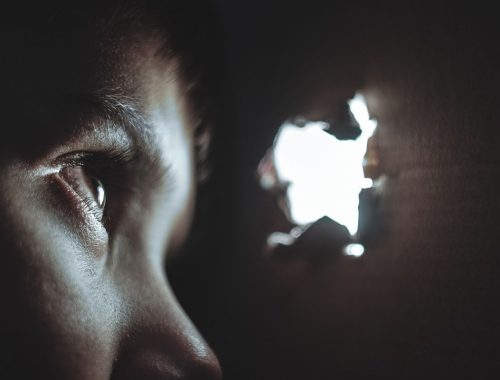
3 Simple Steps to Follow to Beat Winter Blues
Perhaps a cloudy day, a tree that starts showing its first leaves, a flower that already looks felled, all of these things cause your mood to drop. In fact, it seems that just watching nature show the symptoms of winter’s arrival makes you feel down and depressed.
But it’s not just a melancholic feeling: less exposure to light causes changes in our organism that, in some cases, can noticeably alter the mood and cause a specific type of depression. This, is known as Seasonal Affective Disorder (SAD) or winter blues and can be very disabling. In this post, we talk more about the symptoms of this condition and how we can reduce it.
Symptoms of Seasonal Affective Disorder
People with SAD experience recurrent episodes of major depression over a period of time during the year – mostly in the fall and winter – with periods of recovery (usually in the spring or summer). SAD is considered to occur when there is a repeating trend, that is if it occurs for at least two years. Remembering times when we may have felt depressed can help us know if we are susceptible to this disorder.
In addition to the mood alterations specific to depression (such as sadness, irritability, anxiety, anhedonia, asthenia…), in SAD other symptoms appear:
- Appetite disturbances
Increased appetite and appetite for carbohydrates (sometimes associated with binge eating).
- Fatigue

In people with SAD, there is an increase in the secretion of the sleep hormone (melatonin), which can lead to increased sleepiness and fatigue.
- Social Isolation
There is a reluctance to socialize and a hypersensitivity to rejection that results in progressive social isolation. It is as if people are uncomfortable or bothered by people.
SAD can significantly affect our quality of life. Therefore, when we suffer from it, it is advisable to adopt certain habits that can help us reduce its impact.
1. Use Lights That Mimic Natural Light
There are several theories about the factors that influence the cause of SAD, but most studies are related to the circadian rhythm (like an internal clock) where physical, mental, and behavioral changes follow a 24-hour cycle.
Our so-called “internal clock” is guided by sunlight and can be slightly altered when winter arrives, as the body receives less sunlight for fewer hours. Thus, it seems that the key to this disorder could be the lack of light received by the body.
Therefore, some research showed that more natural lighting (or lights that mimic natural daylight) in the workplace and at home can help combat the symptoms of light deprivation. Studies suggest that to this end, we should place full-spectrum (sun-like) bulbs in our lamps during the winter months.
2. Prioritize Exercises

People with Seasonal Affective Disorder have trouble regulating one of the key neurotransmitters involved in mood, serotonin, researchers at the University of Copenhagen (Denmark) found. So getting some exercise-which helps increase serotonin levels in the body naturally-can improve mild symptoms of the disorder.
Plus, to multiply the positive effect of exercise, it is advisable to choose sports that can be practiced outdoors – during the sunny hours – in order to increase the daily time of exposure to natural light.
3.Eat Better
Studies have indicated that eating a balanced diet while reducing caffeine intake, helps to combat the symptoms caused by the winter blues. In addition, adding certain foods to our menus during the fall and winter can help improve mood:
– Foods rich in vitamin D- which our bodies synthesize from sunlight – play a crucial role in serotonin production. It has been found that people with SAD may also produce less vitamin D, which affects levels of this essential hormone for good mood. Incorporating mushrooms into the diet – one of the few foods rich in this vitamin that does not come from animals – can help combat its deficiency.
– Food high in omega-3. Essential polyunsaturated fatty acids, especially omega-3, help maintain optimal and stable serotonin levels. Vegetarians can obtain this fatty acid from the body’s transformation of alpha-linolenic acid, which is present in avocado, flaxseed, chia, hemp, and walnuts.
Have you been suffering from SAD too? Share your experience with us in the comments below.
You May Also Like

Inside The Mind of A Voyeur – What Makes Them Tick?
2022-05-17
How to Not Take Things Personally?
2021-07-02

